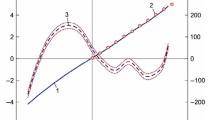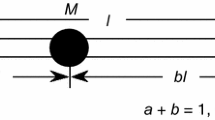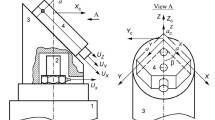Abstract
As part of a continuing program on the development of primary vibration standards, an electrodynamic standard was modified so that it is free of transverse motion throughout almost all of its frequency range. The rectilinear sinusoidal motion produced by the standard is achieved by suspending the moving parts of the standard from the frame by tensioned wires. The standard consists of an electrodynamic vibration exciter equipped with a velocity-sensing coil which is calibrated by the reciprocity method. In the vibration-pickup calibration service recently established at the National Bureau of Standards, the standard is used at frequencies from 10 to 2000 cps at accelerations up to 10 g. The errors of the motion applied to the pickups do not exceed 1% up to 900 cps and 2% between 900 and 2000 cps.
Government and industrial research laboratories use selected electrodynamic velocity, variable resistance and piezoelectric acceleration vibration pickups calibrated on the standard as secondary vibration standards. If properly used these secondary standards can be used to calibrate other pickups by measuring the ratio of their outputs.
Similar content being viewed by others
References
“Test Fee Schedules of the National Bureau of Standards—Mechanics,” reprinted from Federal Register 23,No. 188 (Sept. 25, 1958). Available without charge from the National Bureau of Standards, U. S. Department of Commerce, Washington 25, D.C.
Bouche, R. R., and Miller, J. A., National Bureau of Standards Calibration Service for Vibration Pickups, Shock, Vibration and Associated Environments. Bulletin, No. 27, Part IV,pp. 127–131, June 1959. (Office of The Secretary of Defense, Research and Engineering.).
Levy, S., andBouche, R. R., “Calibration of Vibration Pickups by the Reciprocity Method,”Research Paper 2714, Jnl. Research Nat'l. Bur. Standards, 57,No. 4, 227–243 (October1956).
American Standard Methods for the Calibration of Shock and Vibration Pickups, S2.2-1959, American Standards Association, Inc., 10 E. 40th St., New York 16, N. Y.
Unholtz, K., “Table Motion Problems in Electrodynamic Vibration Exciters,” MB Vibration Notebook, 1,No. 3, 2–4 (December1955).MB Manufacturing Co., New Haven, Connecticut.
Elliott, W. R., “Measurement of Extraneous Motions in Commercial Linear Vibration Tables,” Proc. Instrument Society of America, 10,Paper No. 55-21-1, 1955, 5 pp.
Author information
Authors and Affiliations
Additional information
at time paper was prepared, he was Mechanical Engineer, National Bureau of Standards, Washington, D. C.
Rights and permissions
About this article
Cite this article
Bouche, R.R. Improved standard for the calibration of vibration pickups. Experimental Mechanics 1, 116–121 (1961). https://doi.org/10.1007/BF02323116
Issue Date:
DOI: https://doi.org/10.1007/BF02323116




